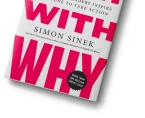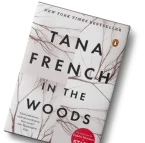
Picture this: a crumbling mansion, a flickering candle, a character whose past hides something monstrous. These are the moments that define gothic fiction—and they’ve captivated readers for centuries. From Mary Shelley’s Frankenstein and Edgar Allan Poe’s The Fall of the House of Usher to modern masterpieces like Netflix’s The Haunting of Hill House, gothic stories continue to explore fear, love, madness, and the supernatural.
So, you want to know how to write gothic fiction? You’re not alone. If old cemeteries or emotionally tormented characters inspire you, this guide will teach you the art of writing gothic fiction—step by step.
And don’t worry, you won’t have to write it alone. Services from Estorytellers can help you build the perfect chilling setting, design unforgettable characters, and polish your work to perfection.
Want to Write a Haunting Gothic Tale?
We help you build eerie settings, emotional depth, and chilling suspense for unforgettable gothic fiction.
Start My Gothic NovelUnderstanding Gothic Fiction
What Is Gothic Fiction?
Gothic fiction is a blend of horror, romance, and mystery, wrapped in an eerie atmosphere and psychological tension. Born in the 18th century, with novels like The Castle of Otranto, the genre often includes:
- Isolated settings: ancient castles, abandoned buildings, foggy moors
- Emotional extremes: fear, passion, guilt
- Supernatural elements: ghosts, curses, unexplainable events
- Unstable narrators: unreliable points of view that blur reality
Why Does Gothic Fiction Still Matter?
We love writing gothic fiction because it forces characters—and readers—to confront their inner darkness. The genre’s themes of repression, identity, death, and desire feel timeless. Gothic fiction is storytelling that makes you feel something deep and primal.
How to Plan and Structure Your Gothic Story
Choosing the Right Gothic Setting
Your setting should feel like a character in its own right. Choose places that are remote, decaying, or full of secrets. Think:
- A haunted orphanage in Wales
- A lighthouse on a cliff during a storm
- A Victorian estate with locked rooms and lost diaries
Estorytellers’ ghostwriters help you describe locations that ooze dread, history, and hidden pain.
Structuring Your Plot with Suspense
Classic gothic fiction often follows this arc:
- Introduction: Introduce the mysterious setting and protagonist
- Build Suspense: Strange occurrences, unreliable characters, inner conflict
- Climax: A terrifying truth revealed—often with psychological impact
- Resolution: Emotional consequences, escape, or tragic ending
Layer in Secrets and Symbols
Symbolism is key. Use ravens, locked doors, or weather to hint at deeper meanings. Secrets should unravel slowly to keep readers engaged.
Struggling to Set the Right Tone?
We guide you in crafting dark, moody, and emotionally intense scenes that embody true gothic atmosphere.
Enhance My SettingHow to Start a Gothic Story (Example)
Example Opening:
The rain clung to her like a memory she couldn’t shake. At the gates of Blackwood Manor, Evelyn paused—its windows glared like watchful eyes. Somewhere inside, the truth about her mother’s death waited. Or perhaps, something far worse.
Why It Works:
- Sensory detail (rain, windows) sets mood
- Uncertainty about the past introduces mystery
- Emotional tension hints at personal stakes
Use Estorytellers’ ghostwriters to test and refine multiple gothic introductions with real-time feedback.
Mastering Gothic Creative Writing
Building an Eerie Mood
Mood is everything in gothic fiction. Use sensory language—sight, sound, smell—to create an atmosphere that grips your reader’s spine. Instead of saying “it was creepy,” describe:
- The echo of footsteps in an empty hall
- Candlelight casting claw-like shadows
- The scent of damp stone and fading lilies
Estorytellers’ Mood Mapping Tool helps match descriptions to tone and genre expectations.
Creating Strong Gothic Characters
Your characters should be complex, emotional, and possibly unreliable. Popular types include:
- The Tragic Hero: noble but flawed, often hiding guilt
- The Innocent Outsider: thrust into mystery (like the reader)
- The Byronic Hero: brooding, romantic, and dangerous
Got a Gothic Idea But Can’t Write It?
Our ghostwriters turn your gothic visions into dark, lyrical, and polished manuscripts ready for publishing.
Hire a GhostwriterThemes and Symbolism
Common themes in gothic fiction:
- Madness and identity
- Forbidden love
- Fate and mortality
- Power and repression
Symbolism like mirrors (identity), weather (emotion), and decay (morality) enrich the story’s emotional layers.
How to Write a Gothic Romance
Adding romance to gothic fiction takes the tension up a notch. Think Wuthering Heights or Rebecca—love and fear go hand in hand.
Build Romance Through Mystery
- Lovers are drawn together by secrets or danger.
- Emotional attraction grows despite warnings or fear.
- There’s a balance between longing and danger.
Example:
He stepped closer, eyes glinting in the candlelight. “This place… it takes things from you.”
“And what has it taken from you?” she asked.
“Everything,” he whispered. “Except the need to protect you.”
Techniques & Tools for Writing Gothic Fiction
Leverage Fear & Phobia
Tap into human fears—abandonment, madness, isolation. Make fear internal as well as external.
Balance Familiar and Fresh
Avoid clichés like “the haunted house” without purpose. Instead:
- Flip the trope: maybe the protagonist is the ghost
- Change the setting: an abandoned spaceship could be gothic too
Want to Build Mysterious, Brooding Characters?
We help you develop emotionally layered protagonists and villains that elevate your gothic narrative.
Create My CharactersDialog That Builds Suspense
Keep the dialog short and charged with subtext. Use silences, interruptions, and unreliable statements.
Editing, Feedback & Publishing
Self-Editing for Gothic Fiction
Ask:
- Is the mood consistent?
- Are character motivations clear?
- Does tension build naturally?
Working with Editors
Professional editors help maintain mystery without confusion. Estorytellers pairs writers with genre-focused editors for clarity, style, and emotional impact.
Publishing Tips
- Gothic fiction works great for both indie and traditional publishing.
- Include keywords like “gothic suspense” and “dark romance” in your Amazon metadata.
- Estorytellers provides services for cover design, blurbs, and launch plans.
Tips for Beginners On How To Write Gothic Fiction
- Read Gothic Classics
Try Dracula, Frankenstein, The Turn of the Screw, or The Bloody Chamber. - Write Every Day
Even 200 words a day builds momentum. Use Estorytellers’ daily writing prompts. - Use Writing Sprints & Challenges
Estorytellers hosts weekly community challenges to help keep you accountable. - Explore Darkness with Empathy
The best gothic fiction doesn’t shock—it connects. Use fear as a way to explore vulnerability.
Not Sure How to Structure Gothic Fiction?
Our experts help you craft eerie plots with symbolic meaning, emotional arcs, and satisfying resolutions.
Fix My StructureConclusion: Let Estorytellers Help You Haunt the Page
Gothic fiction is a timeless, emotional, and deliciously dark genre that speaks to readers’ deepest fears and desires. Now that you know how to write gothic fiction, you’re equipped to build moody settings, craft compelling characters, and structure stories that linger long after the last word.
From gothic creative writing to how to write a gothic romance, this genre lets you explore the beauty in the macabre. Whether you’re aiming for suspense, heartbreak, or supernatural horror, gothic fiction allows it all.






























